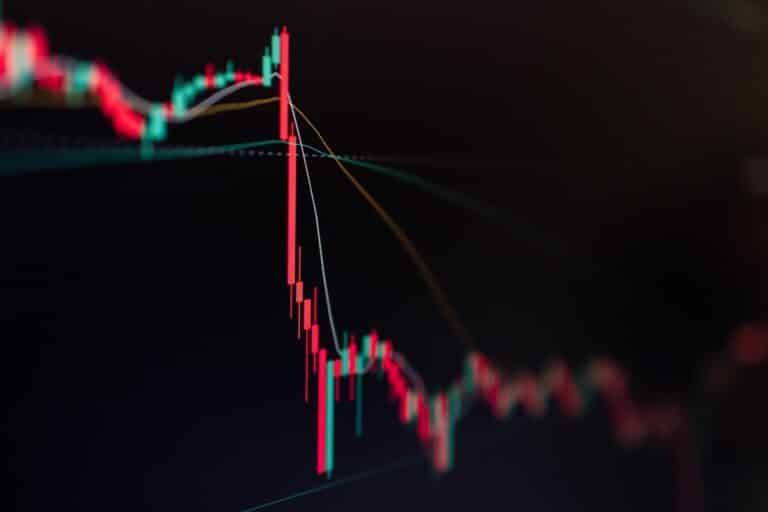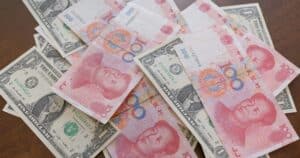The Great Depression, from 1929 to 1939, is often considered the darkest chapter in modern economic history. It was a time when unemployment soared to unprecedented heights, international trade collapsed, and countless people were plunged into misery. Nearly 100 years later, our economy still faces severe challenges: a global pandemic, climate change, and rising inequality, to name a few.
While these problems differ from the Great Depression, the two eras have one thing in common: they pose a significant threat to our economic stability and societal well-being. Read on to learn how past lessons can help sway our approach to the solve problems of the present.
The Impact The Great Depression Had On The Economy
The Great Depression remains the most devastating of its kind, and its profound effects affected millions of families who fell into poverty and faced insurmountable difficulties, such as shortages of food and other necessities.
Stock Market Crash And Bank Failures
The 1929 Wall Street Crash, also known as Black Tuesday, marked the beginning of the Great Depression. On October 29, 1929, panic selling occurred, leading to a rapid decline in stock prices. The U.S. stock market lost over $14 billion in a single day, and by 1932, stock values had dropped to just 20% of their pre-crash levels.
Effective regulation and supervision were lacking, and as the stock market crumbled, banks faced a wave of loan defaults and deposit withdrawals, leading to widespread bank failures and a decline in lending.
As fear and panic spread, people rushed to withdraw their savings, leading to bank runs. Unable to meet the demand for cash, more than half of the banks in the U.S. either collapsed or merged by 1933, resulting in a substantial loss of savings for many families.
Economic Collapse
In the years leading up to the collapse, industries experienced rapid growth and expanded their production capacity. However, wages didn’t keep pace with this exponential growth, leading to declining consumer spending.
As a result, companies faced an oversupply of goods and struggled to sell their products, leading to layoffs, further reducing consumer purchasing power. This vicious circle of overproduction and underconsumption deepened the economic crisis.
It contributed to a jump in the unemployment rate, which reached 25%, but experts believe the true extent was even higher. The staggering numbers reflect the grim reality of families struggling to put food on the table and a roof over their heads.
In response to the crisis, President Franklin D. Roosevelt implemented a series of bold reforms known as the New Deal. These initiatives were aimed at stimulating the economy, creating jobs, and helping those hit hardest by the downturn. Programs such as the Works Progress Administration (WPA) and the Social Security Act provided immediate relief and laid the foundation for long-term economic stability.
Decline In International Trade
Throughout the 1920s, the global economy was highly interconnected, and countries depended on international trade for economic growth. However, in response to financial challenges, various countries pursued protectionist trade policies with high tariffs and trade barriers like the Smoot-Hawley Tariff Act in the U.S., which imposed high tariffs on imported goods.
This led to retaliation by other countries, further plummeting international trade by about 65% from 1929 to 1934. These policies stifled international trade and heightened the economic crisis by restricting the movement of goods and services across borders. As trade barriers increased, it became increasingly difficult for countries to export their products and generate revenue.
Monetary Policy Failures
In a move to curb speculative lending that had contributed to the stock market’s overheating, The Fed decided to raise interest rates and reduce the money supply in the economy. This decision, however, ended up worsening the economic downturn.
The increased interest rates made borrowing more expensive, limiting businesses’ and individuals’ access to credit. This stifled business expansion, leading to a slowdown in economic activity.
Simultaneously, the reduction in the money supply, intended to curb inflation, ironically deepened the deflationary spiral. As the amount of money circulating in the economy decreased, prices fell dramatically, making debts more burdensome in real terms. This deflation further decreased spending, investment, and economic output, worsening the depression’s severity.
The Causes Of Current Market Volatility
The biggest economic shock in recent times has undoubtedly been the COVID-19 pandemic. This global health crisis has triggered a widespread economic downturn, which we haven’t seen in several decades. The imposed lockdowns, travel restrictions, and social distancing measures have disrupted supply chains, stalled economic activity, and significantly declined global GDP.
Adding to these challenges are ongoing geopolitical tensions. Trade disputes, Brexit uncertainties, and faltering relationships between major economic powers have created an unstable global economic environment.
At the same time, the world has experienced increased volatility in financial markets. Whether it’s the fluctuation in cryptocurrency prices, the frenzy in GameStop stock trading, or the uncertainties surrounding inflation, these events impact the entire global economy and affect institutional and retail investors.
Comparing The Current Economic Challenges To The Great Depression
The current economic climate, shaped by unique challenges, often urges us to draw comparisons to historical economic downturns, particularly the Great Depression. While parallels exist, it’s important to remember that each financial crisis is distinct, influenced by its specific circumstances and global context.
Business Operations And Unemployment
Governments worldwide imposed containment measures of varying severity to contain the spread of the virus. These ranged from orders to stay home and travel restrictions to the closure of non-essential businesses.
The sudden halt in operations hit businesses hard, especially in the hospitality, tourism, and brick-and-mortar retail industries. Without the ability to operate normally and uncertain when the restrictions would ease, many businesses suffered significant losses, and some were forced to close permanently.
In the United States, the unemployment rate reached an all-time high of 14.8% in April 2020, the highest since the Great Depression. Unlike the 1930s, however, the unemployment rate has declined more rapidly due to the intervention of governments and central banks worldwide and the adaptability of modern economies.
Reduced Consumer Spending
Faced with uncertainty about job security and future income due to the pandemic, many consumers have adopted a more conservative approach to spending, prioritizing necessities over discretionary purchases.
In addition, sectors that rely on discretionary spending, such as travel, entertainment, and dining, have been hit harder. Demand in these sectors has dropped dramatically as people stay home to avoid infection. Even online businesses were affected, as consumers avoided non-essential purchases to save money during uncertain times.
Financial Market Volatility
As the virus spread and countries went into lockdowns, stock markets plunged due to fears about the pandemic’s effect on economic activity and corporate profits. Investor confidence was shaken, and markets experienced extreme volatility. This uncertainty led to a low-risk environment in which investors turned away from riskier assets, such as equities, in favor of safer investments, like government bonds or gold.
However, volatility wasn’t limited to the stock markets. Commodity markets also saw significant fluctuations, with oil prices briefly turning negative due to falling demand and oversupply.
Not only did it diminish the wealth of individuals and institutions, but it also hampered economic recovery efforts. For businesses, volatile markets made it difficult to plan for the future, potentially delaying investment and hiring decisions. For governments and central banks, volatile financial conditions made stabilizing their economies and implementing stimulus measures more difficult.
Lessons Learned To Avoid A Great Depression Repeat
Our contemporary economy is informed by past lessons, armed with more robust financial systems and supported by proactive government and central bank policies, better equipped to navigate and recover from economic downturns. By learning from past mistakes, the U.S. government has prepared better for any economic downturns to avoid a repeat of the Great Depression.
Globalization And Interconnectedness
In the 1930s, U.S. production fell 72% in two years, and international trade fell 30%. In response to the devastating effects of the Depression, countries banded together to create institutions such as the International Monetary Fund (IMF) and the World Bank, providing loans and technical expertise to needy countries.
By promoting responsible fiscal and monetary policies, the IMF and World Bank have been instrumental in maintaining the stability of the global economy and preventing another catastrophic event like the Great Depression.
Countries realized that isolationist policies and trade barriers only exacerbated the economic downturn in the 1930s. As a result, there was a shift toward free trade and eliminating tariffs and quotas.
This commitment to open markets and international trade has driven globalization in recent decades and helped many countries achieve greater economic growth and prosperity. Removing trade barriers has allowed efficient resource allocation, specialization, and increased competition, contributing to economic development and higher living standards worldwide.
Government Intervention And Stimulus Measures
Toward the end of the Great Depression, the U.S. government’s New Deal provided $41.7 billion in funding for domestic programs like unemployment relief. Today, the U.S. government continues to use these lessons, implementing stimulus packages and other interventions during economic downturns.
These measures aim to support struggling sectors, stabilize financial markets, and stimulate consumer spending. By injecting funds into the economy, the government hopes to create jobs, boost businesses, and restore confidence among the public. In recent years, the U.S. government has also implemented targeted interventions during the COVID-19 pandemic, such as direct payments to individuals, unemployment benefits expansion, and small business loans.
These interventions have been instrumental in preventing a deeper economic downturn and providing relief to those affected by the crisis. While the debate over the extent of government intervention continues, history has shown that well-designed and timely measures can play a role in mitigating the impact of economic crises and facilitating recovery.
Hedge Against Market Volatility And Invest In Precious Metals
Investing in gold or other precious metals can offer a form of financial insurance, safeguarding your wealth against the unpredictability of stocks or bonds. Amid the Great Depression, while many stocks plummeted, gold held its ground and even appreciated as investors sought refuge in its stability.
Noble Gold Investment offers a range of IRS-approved precious metal bars and coins you can store at home or in a self-directed IRA. Call us at (877) 646-5347, or click here to open an account and start investing today.







